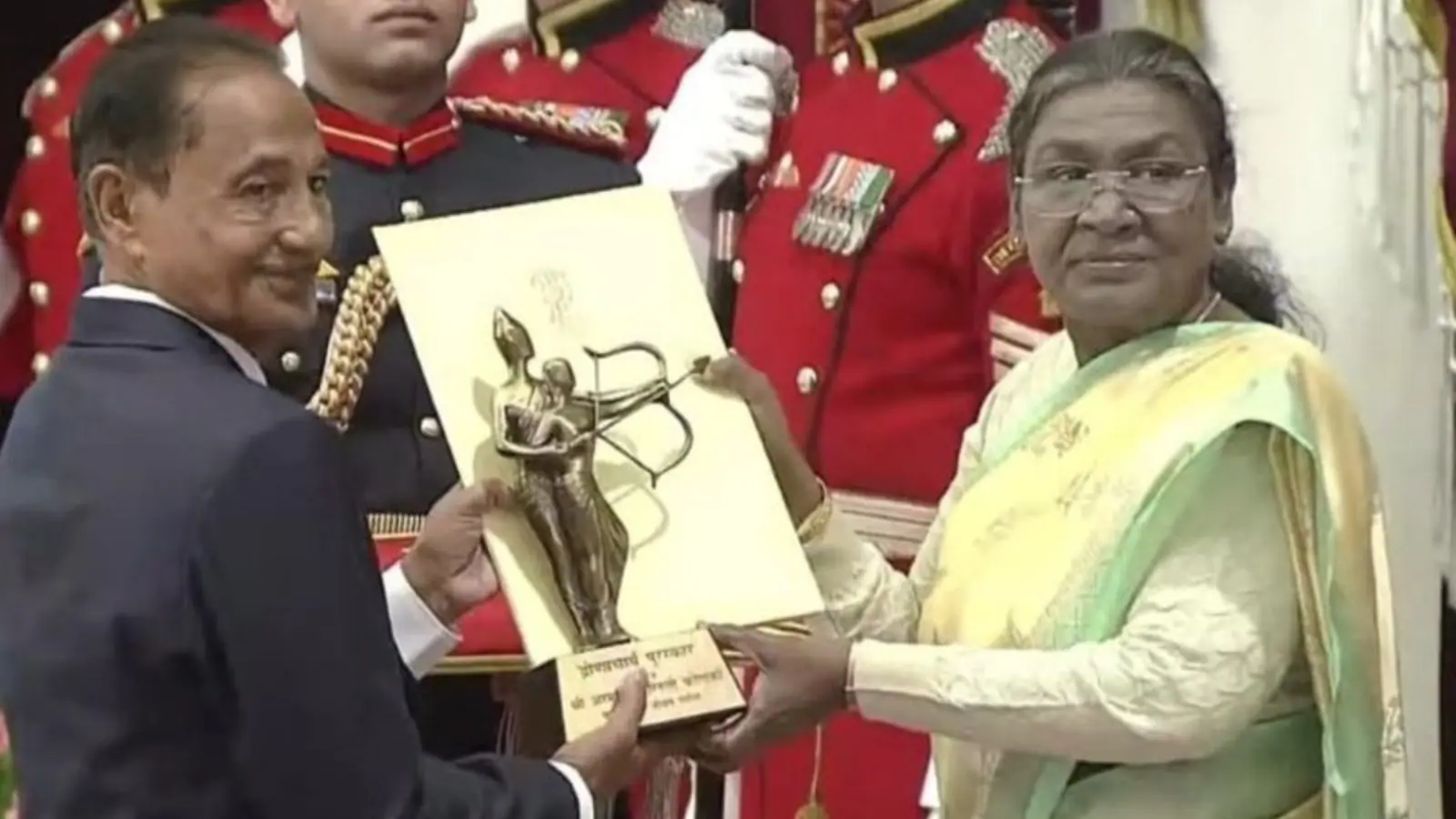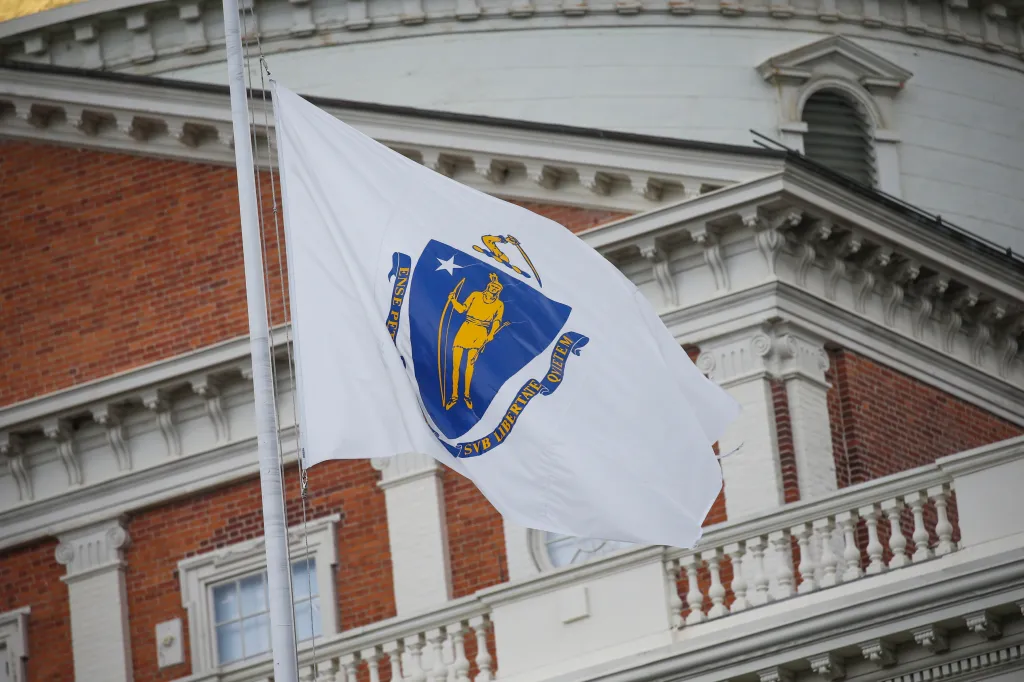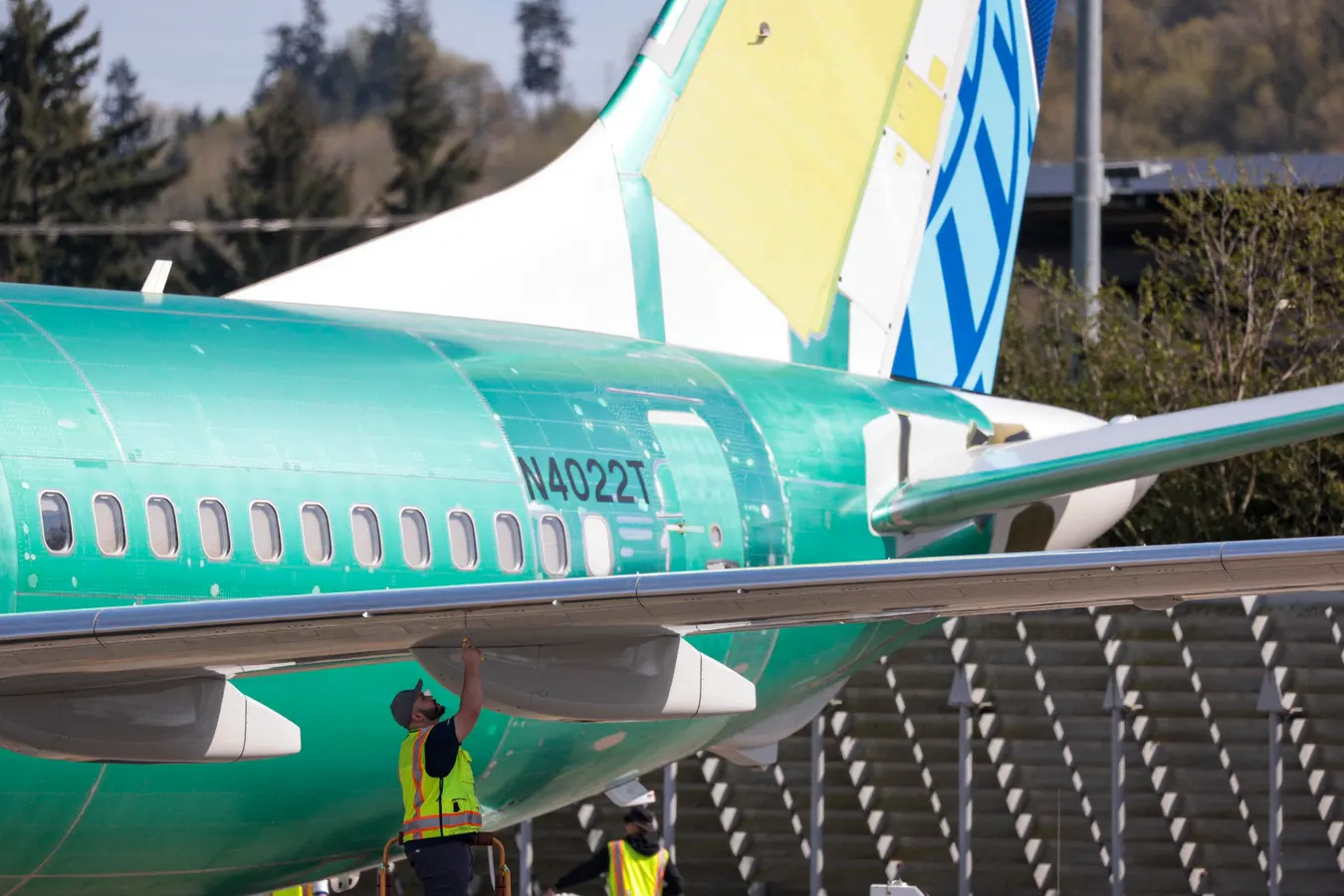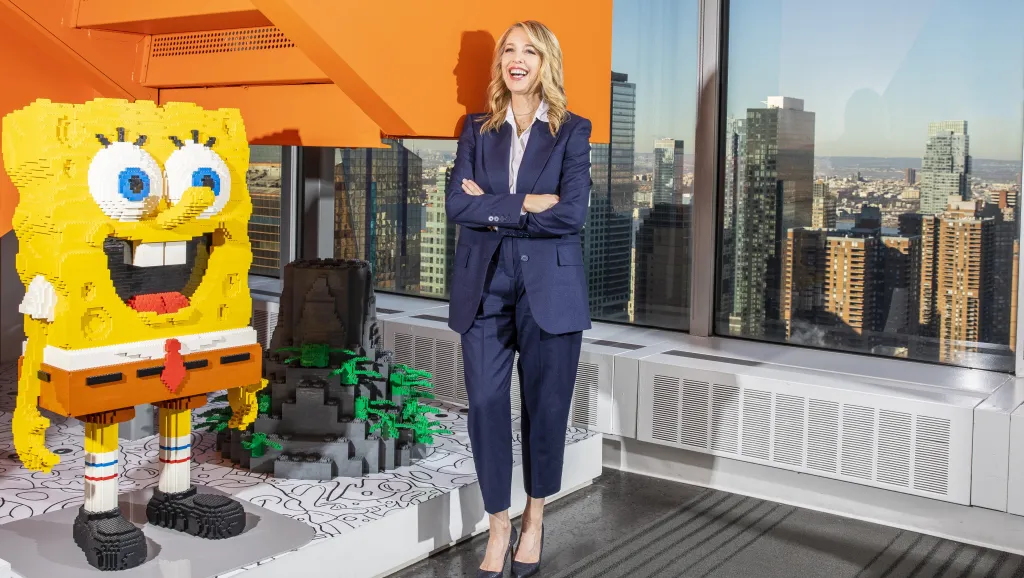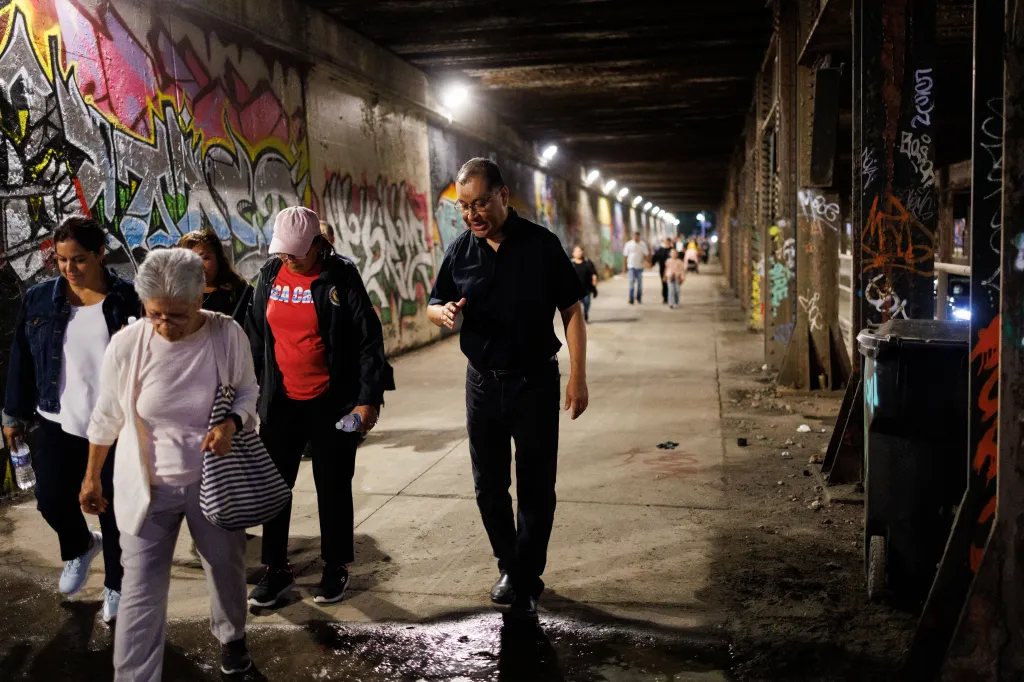
As federal agents hurled tear gas and pepper spray through the night sky at protesters outside the U.S. Immigration and Customs Enforcement holding facility in Broadview, the Rev. Quincy Worthington threw his arms out and used his body to shield those around him. Breathing through his own gas mask, the north suburban Presbyterian minister, who was wearing a clerical collar, hugged whoever he could and dragged them away from the fray.
His forearms burning from the pepper spray bullets, Worthington secured medical help, located water and, for the most part, listened to those protesting the Trump administration’s immigration crackdown in the area.
“People just need to know that somebody’s there for them,” he said.
With escalating federal immigration enforcement operations across Chicago and its suburbs, and President Donald Trump’s threats of sending the National Guard to quell crime, tension and fear have gripped those opposed to his administration and its “Operation Midway Blitz,” which officials say has resulted in more than 550 immigration arrests in the Chicago area this month.
Trump’s actions have prompted everyday citizens to confront immigration agents during arrests, activists to hold weekly news conferences and dozens of demonstrations and rallies to spring up on street corners and plazas, with the protest outside the ICE Broadview facility a flashpoint in a weekly standoff against federal agents, who fired baton rounds and tear gas at protesters for the third Friday in a row last week.
Faith leaders are on the front lines with demonstrators. They are not only attending rallies and protests, they’re providing resources and offering safe spaces for people to gather, worship and counsel one another — that support felt nowhere more so than in the Latino community, which has borne the brunt of Trump’s enforcement operations.
‘Missionaries of hope’
The Rev. Carmelo Mendez walked shoulder to shoulder with congregants Wednesday night in a procession for migrants through the city. For nearly 3 miles, Mendez — pastor of St. Oscar Romero Catholic Church — and about 50 mostly Latino parishioners strode along narrow sidewalks and through quiet street corners as they made their way from St. Michael the Archangel Church in Back of the Yards to St. Rita of Cascia in Chicago Lawn.
Each step, Mendez said as he walked, moved them closer toward their goal: hope.
“(Our) main role is just to accompany them,” he said. “Unfortunately, there’s not much we can do to change their status. But we give them support. … As a pastor, as a shepherd, that’s (the message I’d) really like to convey.”
Around him, congregants sang hymns, their voices playing over the hum of cars driving by and the crunch of gravel beneath sneakers. Some parishioners clutched rosary beads, reciting prayers in low tones to themselves.
Jose Trejo walked arm in arm with his mother and father. Together, they teetered between optimism and unease.
“As you might see, the majority of the people here are Hispanic. … So I feel like a lot of us are walking with hope to continue moving forward but also with a little bit of fear,” the 28-year-old Back of the Yards resident said. But making the trek with his family — and carrying on a religious tradition despite the anxieties — is empowering, he said.
Over the past few weeks, Jacqueline Ramirez has leaned on her faith. Ramirez, who just started her freshman year at DePaul University, took part in the procession with her mom. She has always considered herself close to God, the 18-year-old said, but especially at this time, she’s relied on “having that belief that nothing bad is going to happen and just praying for my people.”
Ramirez said she was thankful for the chance to be with her community in a different way. For Mendez, he said it was humbling and an honor to be there.
After all, he’s an immigrant himself.
The Wednesday procession was part of the Archdiocese of Chicago’s observance of National Migrant Week — which the U.S. Catholic Church has celebrated for 45 years — that culminates Sunday with a 5:15 p.m. Mass in nine languages at Holy Name Cathedral downtown.
The archdiocese’s immigration ministry and parishes have been offering services like Mass, rosary prayer and holy hour, and free resources like legal immigration consultations, as well as labor rights, mental health and “Know Your Rights” workshops.
The weeklong celebration events have shared the theme of the Vatican’s upcoming World Day of Migrants and Refugees, “Migrants, missionaries of hope,” which Chicago’s own Pope Leo XIV says reflects “their courage and tenacity” that “bear heroic testimony” to their faith.
“Our migrant brothers and sisters are not strangers; they are family in Christ,” said Cardinal Blase Cupich, archbishop of Chicago, in a Monday news release highlighting National Migrant Week. “They enrich our Church and serve as a reminder that the gospel knows no borders and that God’s love is for all people.”
Bishop Tim O’Malley of the archdiocese, based in Lake County and pastor at Most Blessed Trinity Parish in Waukegan, said he still writes letters in support of community members seeking residency or citizenship, and the parish continues offering a food pantry for groceries and hot meals at their soup kitchen every week, as well as counseling to spiritually “walk with them.”
He has been at the parish since 2018, he said. “I have not seen so much concern over immigration issues until now,” he added, from U.S. citizens and undocumented migrants alike.
On Sept. 20, a morning after federal agents violently clashed with protesters in Broadview, hundreds marched from downtown North Chicago to the entrance of the Naval Station Great Lakes base, which the Trump administration asked for support on immigration operations.
Representatives from seven congregations of multiple faiths — including the rabbi of a Reform Jewish synagogue, a Catholic priest from Chicago, and reverends of a suburban Unitarian Church and a Presbyterian Church — offered prayers outside the station.
Rabbi Ike Serotta of Makom Solel Lakeside in Highland Park said a vast majority of Americans came to the United States seeking refuge in some form, and he sees those being arrested as refugees, like members of his family once were.
“My ancestors were refugees,” Serotta said. “Unfortunately, some did not come soon enough and were killed in the Holocaust. The people I encounter are seeking asylum. They are going through the legal process.”
Being present
At a peaceful rally in suburban Melrose Park earlier this month, Roberto Moreno, pastor of the First United Methodist Church in nearby Franklin Park — where an ICE agent fatally shot an undocumented father, Silverio Villegas-Gonzalez, after a traffic stop Sept. 12 — carried a sign with a big red heart and the words “No human being is illegal.” A child had drawn cherubs holding ribbons asking for “Más amor” — more love.
“There has been a rush of fear over the whole community,” Moreno told the Tribune in Spanish. There are fewer congregants in attendance, he said, as residents “feel a lot of dread about simply going outside.”
Moreno came to the United States in 2007 from a small town near Comayagua in Honduras, fleeing cartel violence after one of his brothers was murdered. Like many immigrants, he said, he crossed the southern border. It then took him years to go through the long process of obtaining documents.
“I’ve faced the same challenges: the language, the culture — all those challenges fellow migrants experience and live,” he said. “Eso lo conozco en carne propia. I know that in my own flesh.”
After a vigil following Villegas-Gonzalez’s death, Moreno heard a knock on the church’s door, followed by footsteps. He poked his head out from his office to welcome the visitor. It was one of the schoolteachers who taught Villegas-Gonzalez’s son.
She started crying, he recalled.
“Thanks for coming out,” Moreno said the elderly teacher told him. “I came here to this church because I was at the vigil, and I left feeling so affected because I breathed in love, I breathed in hope, I breathed in the grace of God. Now the teachers at school want to offer our help to your church, to support you in everything you’re doing.”
The suburban United Methodist Church is part of the area’s rapid response team, which deploys when there are sightings of federal immigration operations to be present and support the people being affected. Some congregants in the church are also helping families by taking their children to and from school.
“The only way for us to be the church of Christ, in these times, is letting the world know that we are here,” Moreno said. “I firmly believe that the church and faith leaders today, more than ever, have to be present where there is a need.”
Earlier this month, on a Monday morning, calls for “faith over fear” echoed across Daley Plaza as some 50 people gathered to protest heightened immigration operations in a rally led by leaders from the Inner-City Muslim Action Network, or IMAN, New Life Centers and Live Free Illinois. Other Chicago clergy and religious figures spoke to the crowd that day, including the Rev. Michael Pfleger, pastor of St. Sabina Church in Auburn Gresham.
Tariq El-Amin, a resident imam at the Masjid Al Taqwa mosque on Chicago’s Southeast Side, spoke at the Sept. 8 rally downtown.
“We’re not going to be overwhelmed by what we see, what we think to be overwhelming odds,” El-Amin said. “We’ll remind ourselves that we’re not alone.”
Their presence is powerful, says Jessica Darrow.
For the past month, Darrow, a professor at the University of Chicago who lives in Logan Square, has traveled to Broadview to protest. Darrow, 54, considers herself a longtime activist, between advocating in the pro-immigrant space to campus organizing. But nothing could have prepared her for “what it would be like to come face to face with these ICE agents,” she said.
She’s been grateful, though, to have faith leaders beside her.
“To see clergy with their collars, to see rabbis coming dressed in identifiable clothing just so that the people around them can have courage and feel their support and love … I’ve just found that to be incredibly moving,” she said. “And brave.”
Ana Nikolic has been a consistent presence outside Broadview, not to protest, but to support families with loved ones detained inside the facility.
An independent chaplain for a decade now, Nikolic’s mission, she said, is just to help people. These days, that has entailed knocking on the doors of the detention facility seeking insight for families of detainees, she said.
But it has also involved advocating for peace as protests persist outside the building. Heightened tensions, Nikolic says, have made it more difficult to work with federal agents and get loved ones the information they need.
“We’re pretty much the bridge (connecting) them,” she said.
Worthington, the Presbyterian minister who has tried to shield protesters, said what he has seen in Broadview has been both devastating and heartbreaking. But he’s tried to stand his ground as a calming presence through the disquiet.
A few years ago, Worthington was part of a group of ministers that traveled to Texas and Mexico to see how U.S. immigration policies were being implemented in real-time. Since then, and since he’s taken on a ministry in the north suburbs’ large immigrant community, he’s developed an intimate understanding of “what (their) everyday life looks like and the struggles they go through.”
Through the latest immigration crackdown, he’s spent a lot of time praying, he said, and looking for guidance.
“What is the right response?” he said. “Where do I need to be?”
Chicago Tribune’s Cam’ron Hardy and Lake County News-Sun freelancer Steve Sadin contributed.
tkenny@chicagotribune.com
